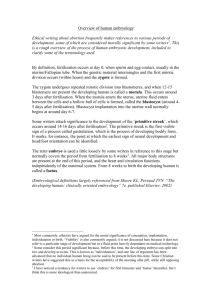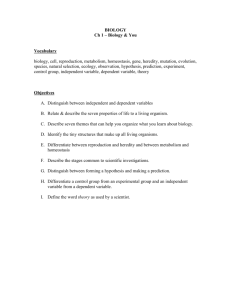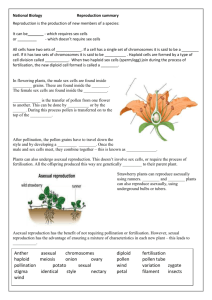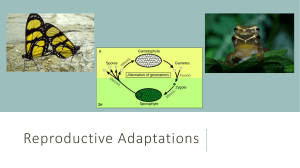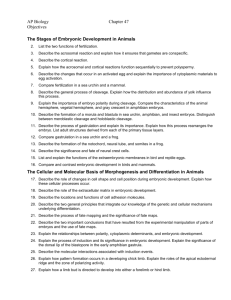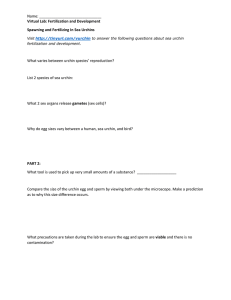Lab Study: Embryonic Development of a common sea urchin. Case
advertisement
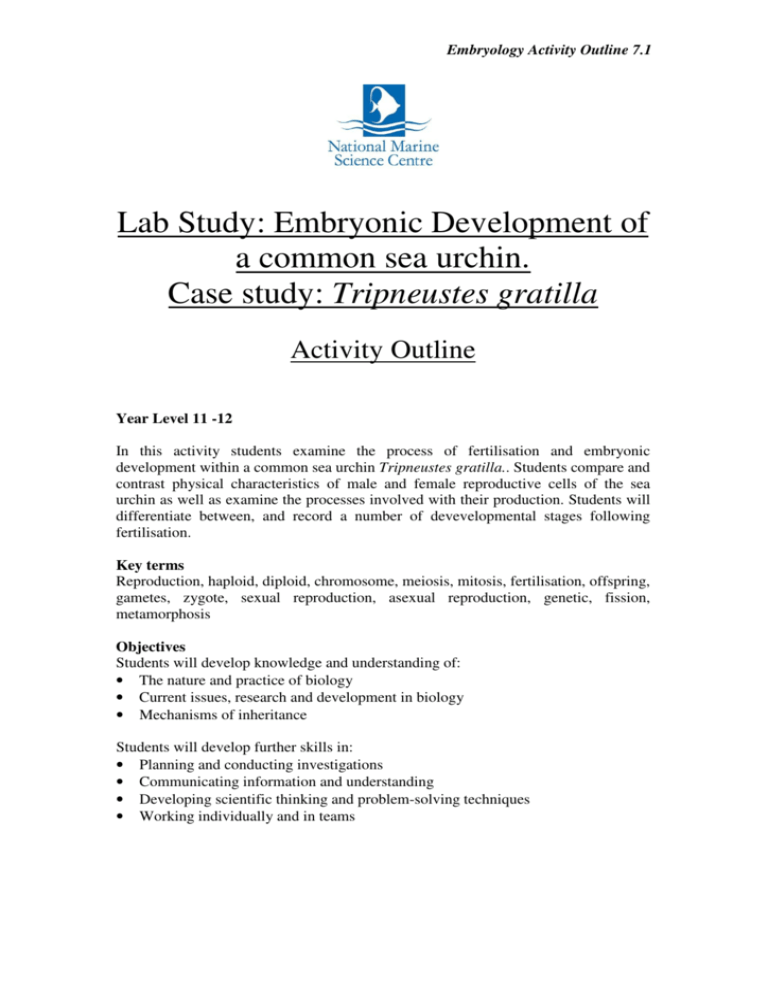
Embryology Activity Outline 7.1 Lab Study: Embryonic Development of a common sea urchin. Case study: Tripneustes gratilla Activity Outline Year Level 11 -12 In this activity students examine the process of fertilisation and embryonic development within a common sea urchin Tripneustes gratilla.. Students compare and contrast physical characteristics of male and female reproductive cells of the sea urchin as well as examine the processes involved with their production. Students will differentiate between, and record a number of devevelopmental stages following fertilisation. Key terms Reproduction, haploid, diploid, chromosome, meiosis, mitosis, fertilisation, offspring, gametes, zygote, sexual reproduction, asexual reproduction, genetic, fission, metamorphosis Objectives Students will develop knowledge and understanding of: • The nature and practice of biology • Current issues, research and development in biology • Mechanisms of inheritance Students will develop further skills in: • Planning and conducting investigations • Communicating information and understanding • Developing scientific thinking and problem-solving techniques • Working individually and in teams Embryology Activity Outline 7.1 Outcomes This activity is designed to address the outcomes from the following BOS NSW Content Endorsed Course 6 syllabuses; MARINE STUDIES Stage 6 Syllabus (2000); Objectives 2.3, 3.1, 5.1, 5.3, 5.4 BIOLOGY Stage 6 Syllabus (2002); Objectives P9, 15, 16 Objectives H9, 15, 16 Key competencies The following key competencies are essential components to student learning and as a result have been embedded within the above learning activity. • • • • • Collecting, analysing and organising information Communicating ideas and information Working with others and in teams Working scientifically Using technology




